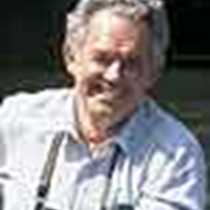Whitby
In the early hours, we arrived off Whitby. A scout boat checked the condition of the narrow entrance as the tide was ebbing strongly under the influence of a full moon and running against a long swell from the southeast, not a good combination. We were apprehensive about our ability to land but received a favorable report. And so after breakfast we entered the homeport of the most famous cartographer and explorer of all time, Captain James Cook. In a sense we had come home.
We walked along the waterfront where he had walked. We visited a museum in his honor just beyond the bridge. Four floors of exhibits highlighted his career. He had risen from the son of a poor farmer to the leader of major expeditions to the Pacific and around Antarctica. Navigation charts that he made were so accurate that they stayed in use for many years. A clock developed by the Harrisons aided his ability as a cartographer substantially. A copy of H-4, Harrison’s large pocket sized watch, was made by Kendall, a famous London watchmaker. It was this watch that Cook took on his second and third voyages and aided his already considerable chart making skills that he had developed in the St. Lawrence River.
Our trip had begun in London moored aside the HMS Belfast. Heading downstream under the Tower Bridge we soon passed the Maritime Museum recognized by the Cutty Sark, a very fast tea clipper. In this museum are the first three clocks the Harrisons built, H-1, H-2 and H-3 as well as the Kendall watch, K-2, that Cook had used and is pictured here.
Later in our journey, we arrived at the Isles of Scilly where Admiral Sir Cloudsley Shovell had met a terrible fate, leading four ships ashore because of faulty navigation. It was this tragedy, killing more than a thousand British seamen that prompted the Longitude Act. The Act offered a 20,000-pound reward that would lead to a chronometer that would allow seamen to determine an accurate position at sea. Cook was a beneficiary of that tragedy.
We too are beneficiaries of these early tools of navigation as they have evolved into sophisticated radar, forward-looking sonar, global positioning systems and automatic pilots. These technologies have allowed us to accurately and safely maneuver into narrow passages and anchor securely in small harbors. And so we have visited St. Kilda, Iona, Rhum, Orkney and Staffa because earlier inventors have given us the tools that are up to the task.
Nearly two years ago, Lindblad Expeditions, in honor of Captain Cook, changed the name of our ship to the MS Endeavour, the name of one of Cook’s ships. As a modern day Endeavour, we carry on a long tradition of exploration by sea with a name connected to the most famous explorer of them all.
In the early hours, we arrived off Whitby. A scout boat checked the condition of the narrow entrance as the tide was ebbing strongly under the influence of a full moon and running against a long swell from the southeast, not a good combination. We were apprehensive about our ability to land but received a favorable report. And so after breakfast we entered the homeport of the most famous cartographer and explorer of all time, Captain James Cook. In a sense we had come home.
We walked along the waterfront where he had walked. We visited a museum in his honor just beyond the bridge. Four floors of exhibits highlighted his career. He had risen from the son of a poor farmer to the leader of major expeditions to the Pacific and around Antarctica. Navigation charts that he made were so accurate that they stayed in use for many years. A clock developed by the Harrisons aided his ability as a cartographer substantially. A copy of H-4, Harrison’s large pocket sized watch, was made by Kendall, a famous London watchmaker. It was this watch that Cook took on his second and third voyages and aided his already considerable chart making skills that he had developed in the St. Lawrence River.
Our trip had begun in London moored aside the HMS Belfast. Heading downstream under the Tower Bridge we soon passed the Maritime Museum recognized by the Cutty Sark, a very fast tea clipper. In this museum are the first three clocks the Harrisons built, H-1, H-2 and H-3 as well as the Kendall watch, K-2, that Cook had used and is pictured here.
Later in our journey, we arrived at the Isles of Scilly where Admiral Sir Cloudsley Shovell had met a terrible fate, leading four ships ashore because of faulty navigation. It was this tragedy, killing more than a thousand British seamen that prompted the Longitude Act. The Act offered a 20,000-pound reward that would lead to a chronometer that would allow seamen to determine an accurate position at sea. Cook was a beneficiary of that tragedy.
We too are beneficiaries of these early tools of navigation as they have evolved into sophisticated radar, forward-looking sonar, global positioning systems and automatic pilots. These technologies have allowed us to accurately and safely maneuver into narrow passages and anchor securely in small harbors. And so we have visited St. Kilda, Iona, Rhum, Orkney and Staffa because earlier inventors have given us the tools that are up to the task.
Nearly two years ago, Lindblad Expeditions, in honor of Captain Cook, changed the name of our ship to the MS Endeavour, the name of one of Cook’s ships. As a modern day Endeavour, we carry on a long tradition of exploration by sea with a name connected to the most famous explorer of them all.




